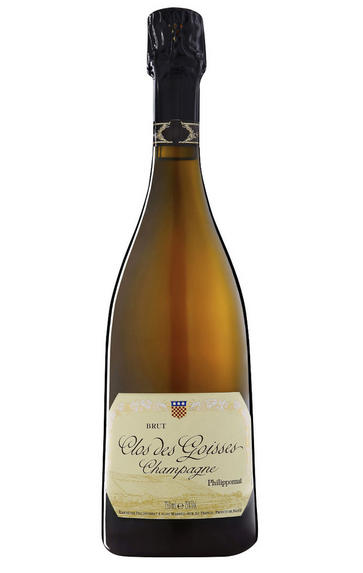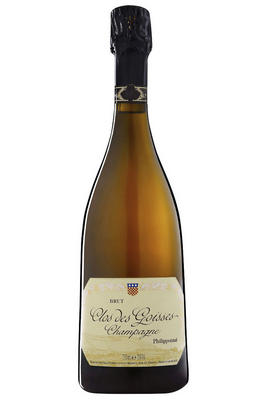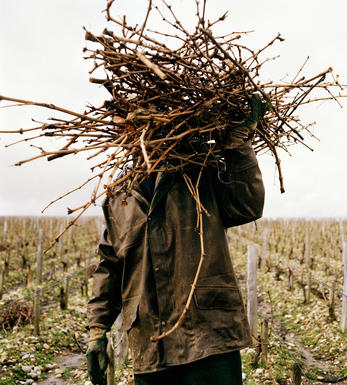
2000 Champagne Philipponnat, Clos des Goisses, Brut

Critics reviews
This is more mature than the 2001 with a beautifully layered nose of yeast, lemon rind, brioche, dried flowers and spice hints. There is excellent volume and superb intensity to the firm mousse that despite the firmness exhibits a very fine bead. This is exceptionally impressive in the mouth with the same striking complexity of the nose coupled with positively gorgeous length. A knockout that could be drunk now with pleasure or held for a few more years first; personally I would opt for the latter but either way, this is a classic Clos des Goisses.
Drink from 2014 onward
Allen Meadows, Burghound.com (January 2013)
Although this has the ripeness of the 1990, it is much tighter and more precise and the aroma more spicy – showing those ginger notes that have appeared on several vintages as well as a greener celery-seed character. Then it fans out more broadly on the finish without losing that bright citrus core. With time the aroma becomes more woody/cedary and that ginger note deepens. Intense and mouthwatering aftertaste.
Drink 2012 - 2028
Julia Harding MW, JancisRobinson.com (November 2014)
About this WINE

Champagne Philipponnat
Champagne Philipponnat is based in Mareuil sur Aÿ Roman in along the banks of the River Marne. Philipponnat makes a wide range of wines but the house’s fame rests squarely on the monumental Clos des Goisses, a Pinot-dominated Champagne that emerges from a 5.5 hectare vineyard in Mareuil-sur-Ay.

Brut Champagne
Brut denotes a dry style of Champagne (less than 15 grams per litre). Most Champagne is non-vintage, produced from a blend from different years. The non-vintage blend is always based predominately on wines made from the current harvest, enriched with aged wines (their proportion and age varies by brand) from earlier harvests, which impart an additional level of complexity to the end wine. Champagnes from a single vintage are labelled with the year reference and with the description Millésimé.
Non-vintage Champagnes can improve with short-term ageing (typically two to three years), while vintages can develop over much longer periods (five to 30 years). The most exquisite and often top-priced expression of a house’s style is referred to as Prestige Cuvée. Famous examples include Louis Roederer's Cristal, Moët & Chandon's Dom Pérignon, and Pol Roger's Cuvée Sir Winston Churchill.
Recommended Producers : Krug, Billecart Salmon, Pol Roger, Bollinger, Salon, Gosset, Pierre Péters, Ruinart

Champagne blend
Which grapes are included in the blend, and their proportion, is one of the key factors determining the style of most Champagnes. Three grapes are used - Pinot Noir, Chardonnay and Pinot Meunier.
26% of vineyards in Champagne are planted with Chardonnay and it performs best on the Côtes des Blancs and on the chalk slopes south of Epernay. It is relatively simple to grow, although it buds early and thus is susceptible to spring frosts. It produces lighter, fresher wines than those from Burgundy and gives finesse, fruit and elegance to the final blend. It is the sole grape in Blancs de Blancs, which are some of the richest long-lived Champagnes produced.
Pinot Noir accounts for nearly 40% of the plantings in Champagne and lies at the heart of most blends - it gives Champagne its body, structure, strength and grip. It is planted across Champagne and particularly so in the southern Aube district.
The final component is Pinot Meunier and this constitutes nearly 35% of the plantings. Its durability and resistance to spring frosts make the Marne Valley, a notorious frost pocket, its natural home. It ripens well in poor years and produces a soft, fruity style of wine that is ideal for blending with the more assertive flavours of Pinot Noir. Producers allege that Pinot Meunier lacks ageing potential, but this does not deter Krug from including around 15% of it in their final blends.


Buying options
Add to wishlist
Description
This is more mature than the 2001 with a beautifully layered nose of yeast, lemon rind, brioche, dried flowers and spice hints. There is excellent volume and superb intensity to the firm mousse that despite the firmness exhibits a very fine bead. This is exceptionally impressive in the mouth with the same striking complexity of the nose coupled with positively gorgeous length. A knockout that could be drunk now with pleasure or held for a few more years first; personally I would opt for the latter but either way, this is a classic Clos des Goisses.
Drink from 2014 onward
Allen Meadows, Burghound.com (January 2013)
wine at a glance
Delivery and quality guarantee